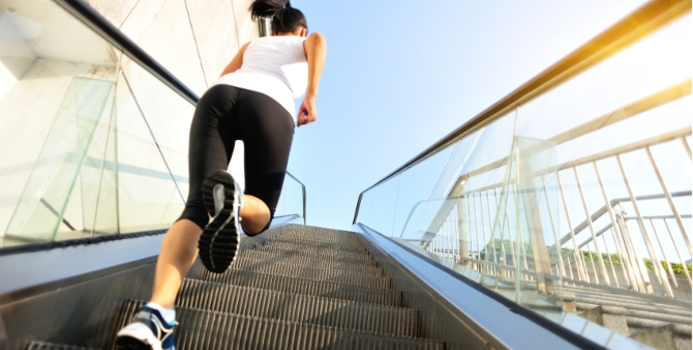Why is the midsection of the body the part that goes out of shape so quickly? What causes midlife belly? Why is abdominal fat considered “toxic” and what can we do about it? Why is it that an apple shape is at greater risk for disease than a pear? Does belly fat contribute to low back pain? To address common concerns about the size and shape of our bellies, this fitness expert offers answers to these and other FAQ’s.
There is a natural tendency to store fat in the abdominal area, and this can make it difficult to see the results of your hard work. Many other variables influence the size and shape of your abdomen as well, including genetics, gender, age, pregnancy, abdominal surgeries and, of course, your weight. Remind yourself of all the benefits of strengthening the abdominal muscles and stay focused on the positive results you can achieve.
1) What causes midlife belly?
Age is one part of the equation; hormones and stress also contribute. With age, a woman’s level of estrogen declines and the male hormone, testosterone, becomes more prominent. This causes fat to migrate to the gut from other parts of the body (the hips, for example). Stress reaction has a similar effect on fat distribution as it releases another hormone, cortisol, which also encourages fat storage in the belly.
2) Why is abdominal fat so “toxic”?
Fat found deep in the abdomen (visceral fat surrounding the organs) is the real culprit. The enzymes in abdominal fat cells are very active, allowing fat to move easily into and out of the cells. The greater amount of fat in the abdominal cavity, the greater amount that can be dumped into the bloodstream, contributing to high cholesterol levels and heart disease. This is why the Apple shape (fat stored in the belly) is at a greater risk of disease than the Pear (fat stored in the hips and thighs).
3) Can exercise help reduce toxic fat?
Yes! Actually studies show that visceral fat is easier to reduce than fat from your thighs (subcutaneous fat). It responds more rapidly to exercise and diet because it is more active and breaks down more quickly. Research shows that exercise reduces the size of fat cells in the belly more effectively than dieting alone. It also prevents fat from being stored in the organs and muscles.
4) Will doing abs exercises help prevent lower-back ache?
They definitely can help. A combination of weak abdominals and extra weight around the belly can pull the top of the pelvis forward, increasing the curve in the lower back and straining it. This can cause muscle fatigue, soreness, or injury. Solution: strengthen the abs and lose body fat.
5) What is the fastest way to shape up my midsection?
The optimal program includes cardio training (at least 30 minutes a day, five days a week), abdominal strengthening and eating a moderate diet. Begin gradually and build up slowly in both the cardio and abs routines. When you are ready to progress, aim for slightly higher intensity. Do more intense cardio work to burn more calories in the same time period, and double up on the abs workouts (just remember to allow a day of rest before repeating them).
Whatever the size and shape of your belly, one thing is certain: A healthy lifestyle has a positive effect in every case!




